Last week we examined two sets of highly traditional Juanegro or Cuanegros masks, along with two unusual masks that might have been worn by the Viejo and the Malinche. Today I will show three more pairs of masks. As you will see, these demonstrate modest variations from the traditional style. All three sets have the “box” form; these masks are unusually deep.
What you may notice already is that this mask has the usual features, but they are carved in low relief, such that the edges almost disappear after several coats of paint. These masks came from Tantoyuca, Veracruz.
Look at the depth of this mask, which measures 8½ inches tall, 6 inches wide, and 3¾ inches deep. This is a good example of a box type Juanegro mask.
This mask was chipped at the top edge and one sees a later repair. There is moderate staining from use. From the back, a box type Juanegro mask resembles a shoe box, nearly rectangular in shape and with deep straight sides that are almost parallel.
A WORD OF WARNING—In recent years one finds what appear to be Juanegro mask imitations for sale, for instance on EBay™. If you are considering the purchase of a Juanegro mask, carefully compare the prospective purchase to the masks in these posts.
Here is the Pañol.
On this mask the edges of the mustache and the hairline are more distinct.
This Pañol measures 9 inches tall, 6 inches wide, and 3¾ inches deep.
This mask had similar damage as the other, but there was no repair.
I found an article about the celebration of Todos Santos in Tantoyuca Veracruz that appeared to demonstrate such box type Juanegos masks in action, in the Danza de los Viejos or La Danza de la Viejada. In this case the masks were being worn by Xantolos or Viejos, dancers who represent the visiting souls of the dead, and there was no mention of the competition between Juan Negro and Pañol. Thus it may be that these Juanegros masks are similar to others that are used for the Xantolos performance.
http://www.destinoveracruz.com/danzas/danzadelaviejada.php
Here is a related photo. One could imagine these dancers within a Juanegros performance but apparently this is a photo of Viejos (Xantolos). The old man on the right carries what could be a bag of seeds.
http://4.bp.blogspot.com/_7ASEwL4jRo4/TMnuNKyk2vI/AAAAAAAAAbU/jHnz96TnOOA/s1600/P1010012.JPG
The second pair of Juanegros masks, also of the box type, differ because of the scalloped hairlines. They too were found in Tantoyuca, Veracruz.
The hair is elaborately scalloped and grooved, while the goatee is rather plain.
In this style, there is not an opening in the hair to frame an invisible ear. This Juan Negro measure 8 inches tall, 5½ inches wide, and 3½ inches deep.
This is another set with moderate wear.
The Pañol mask only differes in the colors of the face and hair.
This Pañol measures 8 inches tall, 5¾ inches wide, and 3½ inches deep.
The backs are identical.
The third pair also has the box form, along with pigtails, eyebrows, and beards of ixtle. According to Barbara Mauldin (1999, page 32), these masks come from the region of Chinampa de Gorostiza, Veracruz.
In this version, the Juan Negro masks have an elaborate script N on both sides while the Pañol masks have a script S instead, apparently for Norte (north) and Sud (south); I know nothing about the meaning of the directional markers on these masks.
This Juan Negro mask measures 8¼ inches tall, 5¼ inches wide, and 4 inches deep, not including the ixtle hair and beard. The elaborate script for the letter N is typical for this style.
These appear to be old masks that have been re-haired (the thread seems new), as if these were collected and then restored.
Here is a YouTube™ video from the town of Chiampa de Gorostiza, Veracruz that includes Juanegros dancers wearing these pigtailed masks. To the left, down the street, Viejos (Xantolos) are preparing to dance. In this video each of the suitors has a female dancing partner and both women wear kerchiefs over their faces. The dance still has a stamping step, but the style of dancing seems more European.
https://www.youtube.com/watch?v=qlBI2TAGXaA
A second video from 2014 presents a sampler of the variety of dances that can be associated with Todos Santos in Chinampa, Veracruz. At the very beginning, some lively music from fiddle and guitar leads to a clip (at 0:20) where the Juanegro rivals are dancing with Malinche in a Panteón (cemetery), to welcome the visiting souls of the dead. This pair are wearing masks with ixtle braids, and Malinche has her face uncovered. Family members are cleaning and decorating the graves, setting up tables, and putting out the favorite foods of the expected deceased visitors. If one advances to 1.26 there are Xantolos dancing in the cemetery while Malinche, wearing a white woven cowboy hat and a silk scarf and with her back to the viewer, looks on. Mouse ahead to 8:11 to see mysterious visitors from the distant past, and then on to 16:54 to encounter some truly elegant costumes. At 20:50 you will see a brief segment of another Juanegro performance, by children. These latter Juanegros wear masks of the box type, but they lack the ixtle features.
https://www.youtube.com/watch?v=mZ752-b0n5s
In passing, in this video I noticed that there appeared to be young women dancing in masks and elaborate costumes. In the past this was never done, out of concern that such women would be negatively labeled because they had associated with rough or lewd partners; all of the dancers were male. But as the dances have been toned done and become more refined, it seems that a new generation of young women have insisted on participating, en mass! If “everyone is doing it,” their participation is less easy to criticize, it seems.
Here is the corresponding Pañol mask with an ixtle braid and the letter S on both sides of the face.
These two masks share a stereotyped mouth design.
This Pañol mask measures 8½ inches tall, 5¼ inches wide, and 4 inches deep, not including the ixtle.
Again one observes recently attached or restored hair. Because of the painted back, it is difficult to estimate the age or degree of wear. Furthermore, as we have seen, this is a contemporary style.
Next week I will show additional Juanegro masks that diverge more sharply from the norm. They have unusual features that are interesting and attractive.

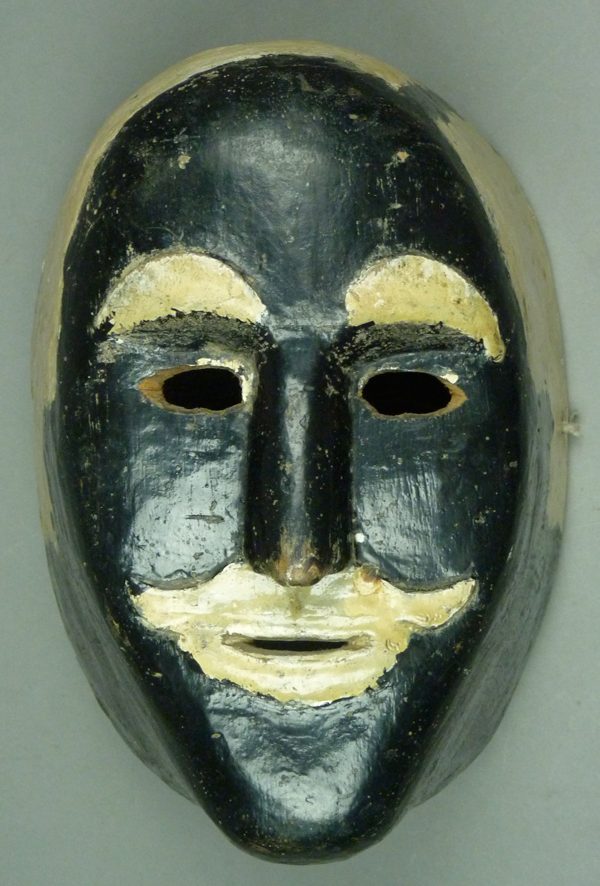
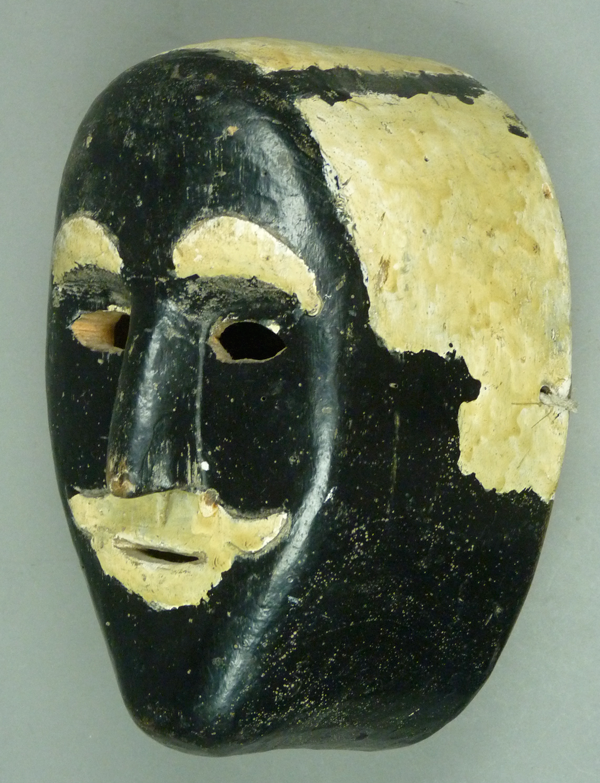
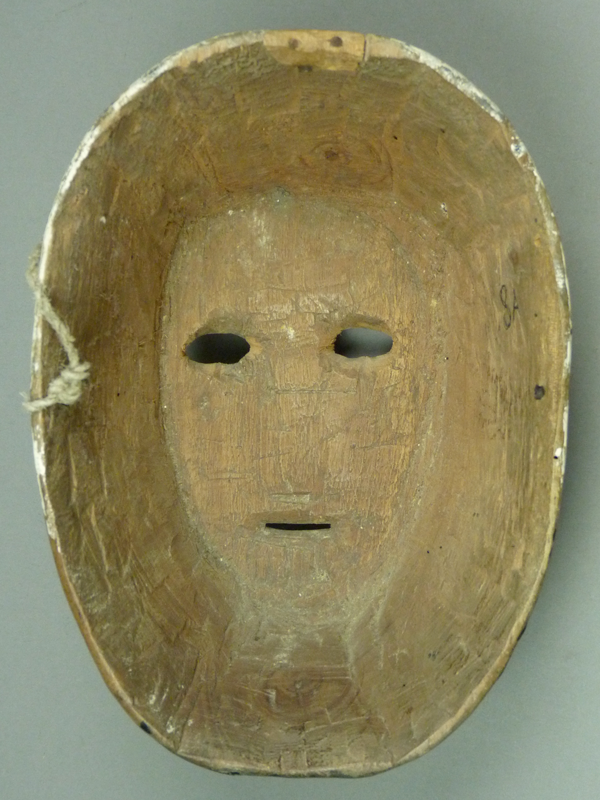
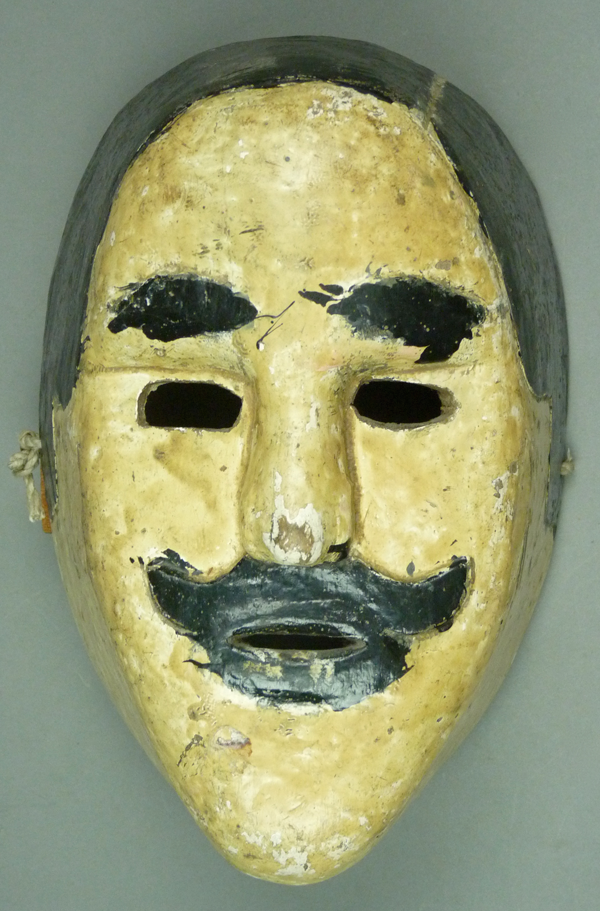
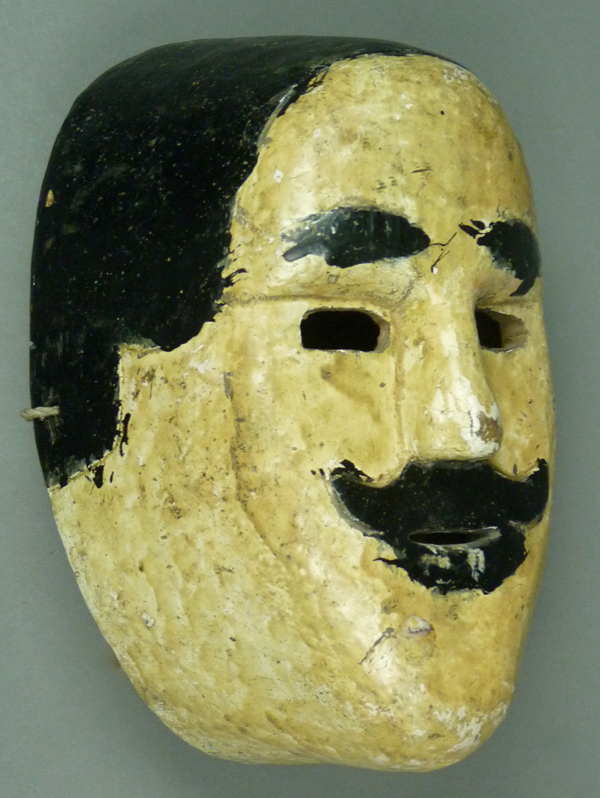
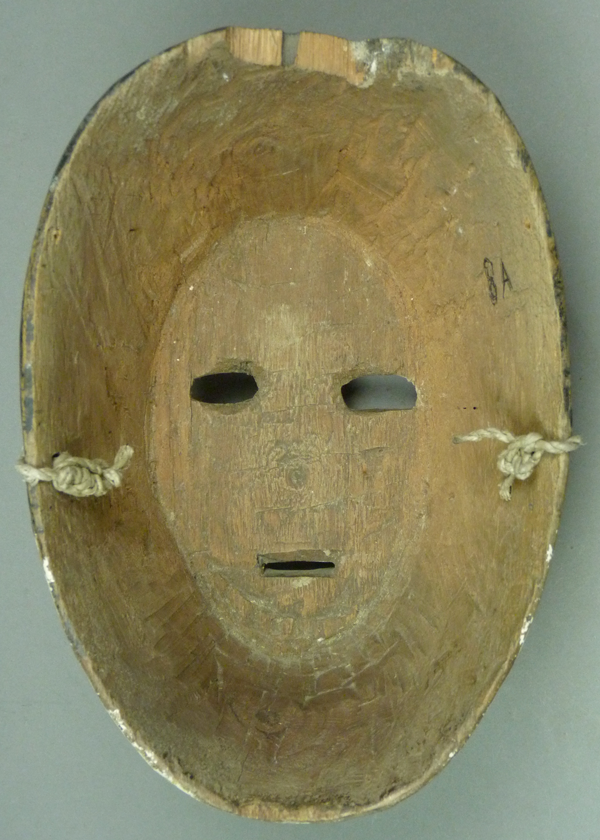
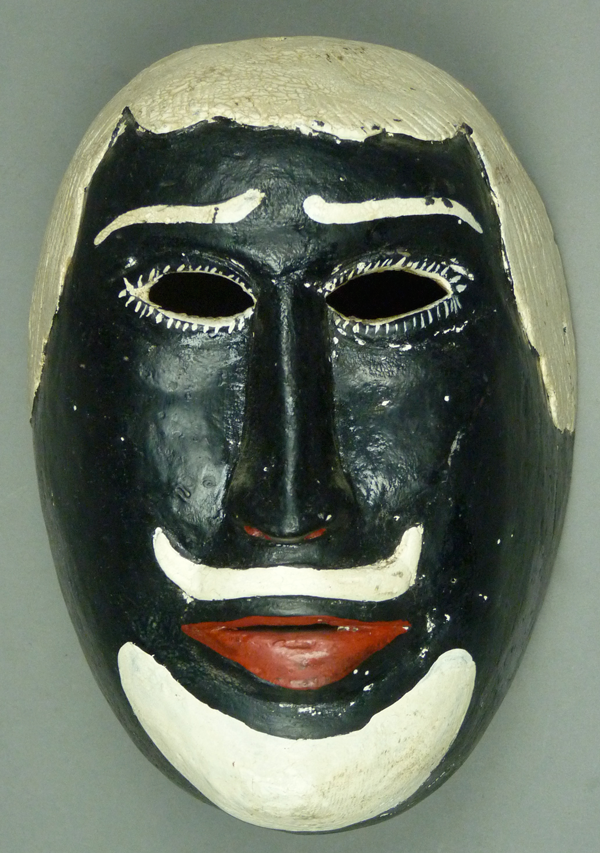
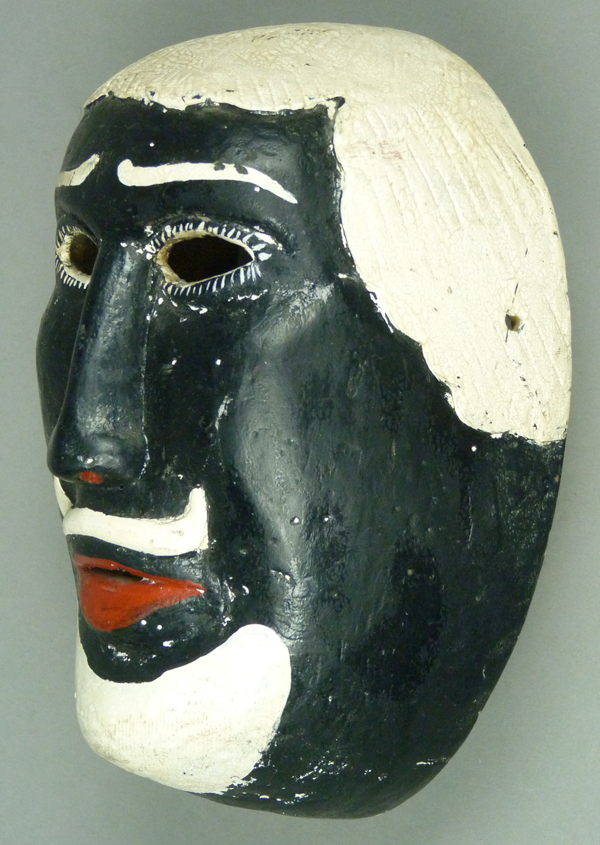
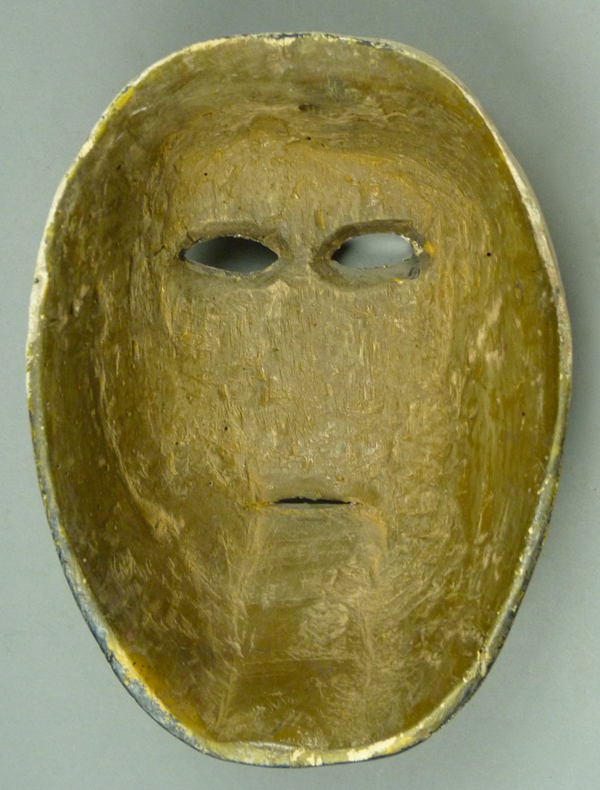

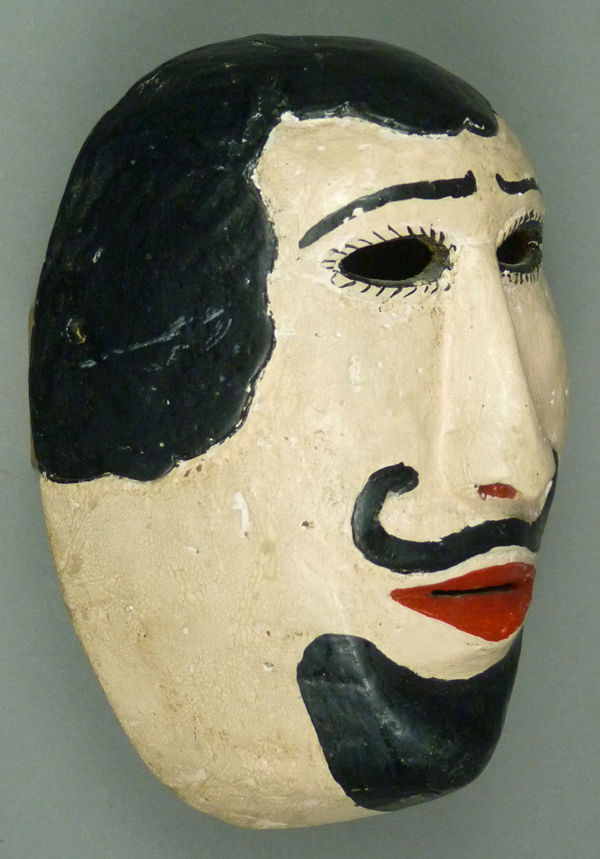
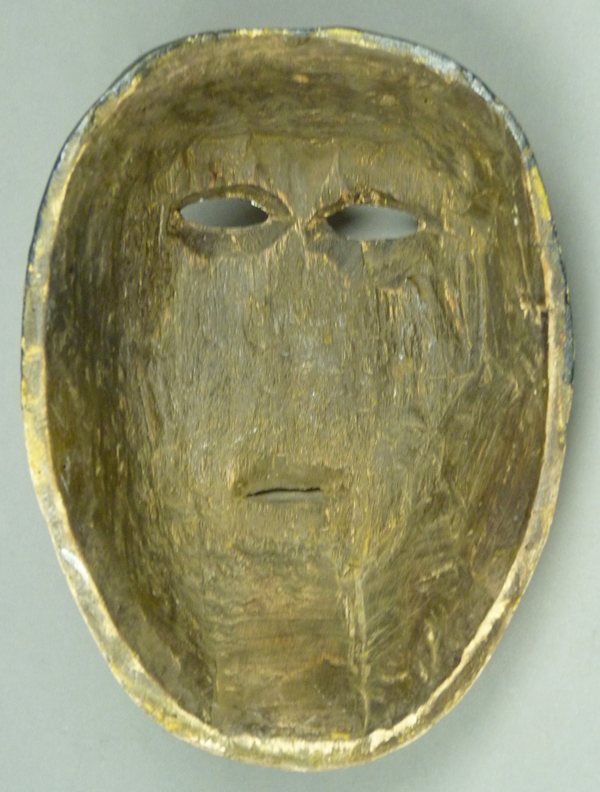
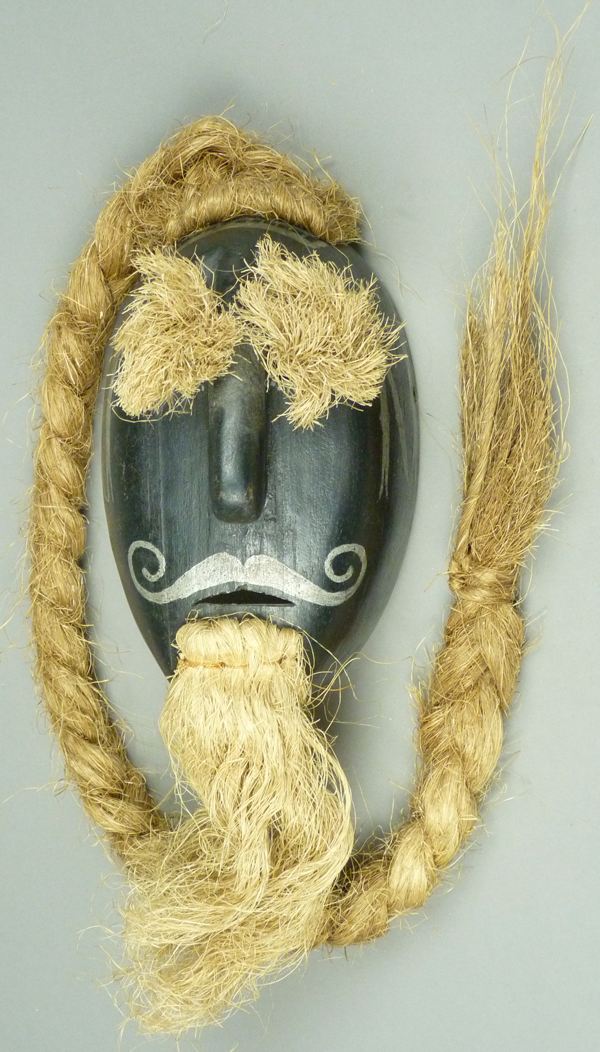
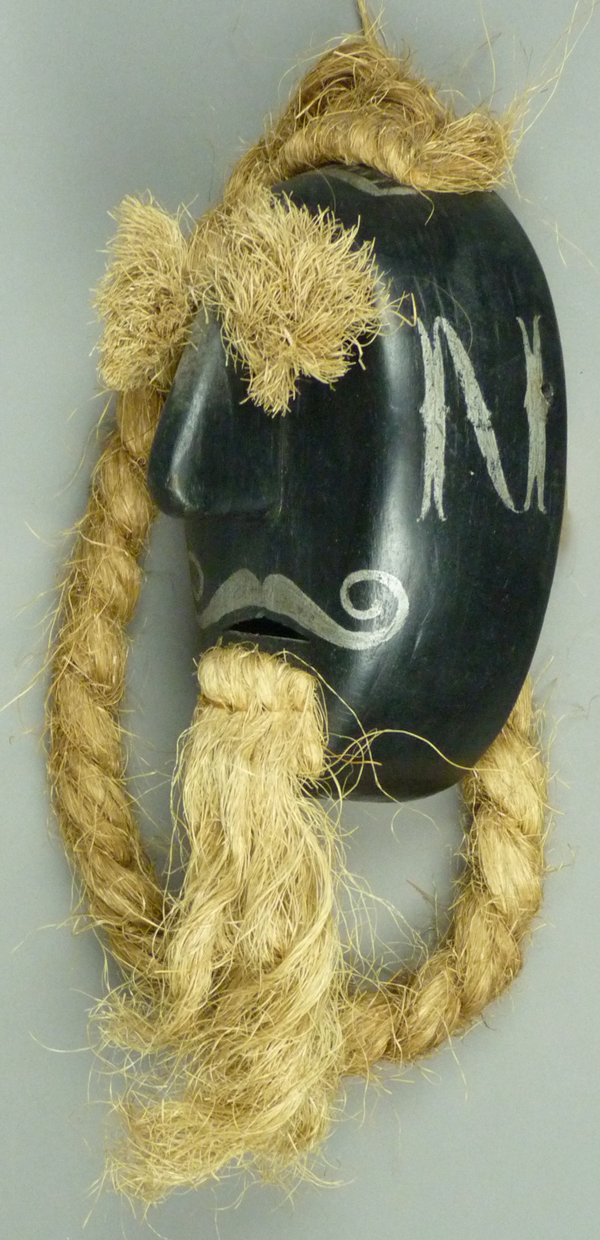
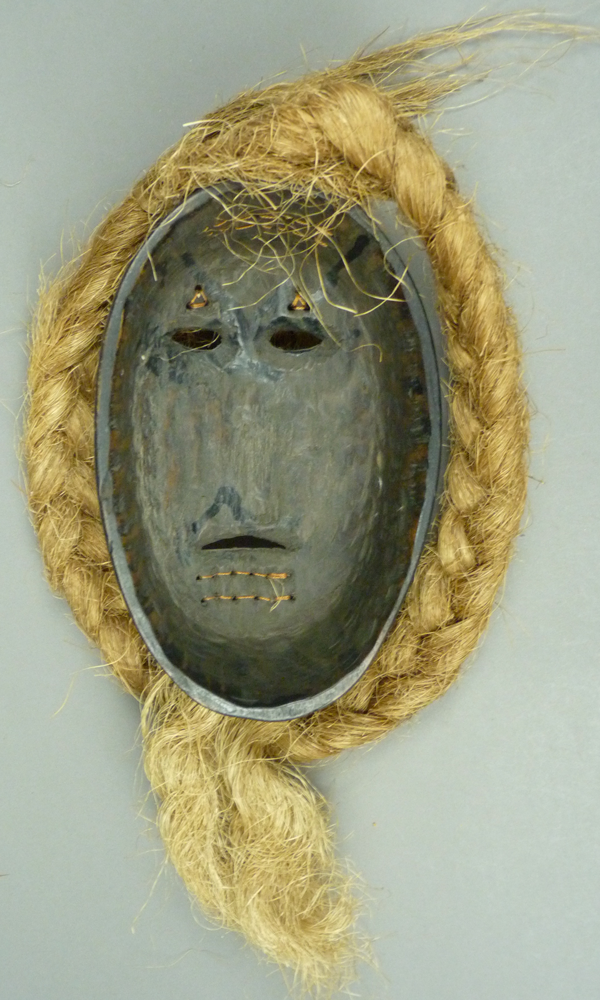
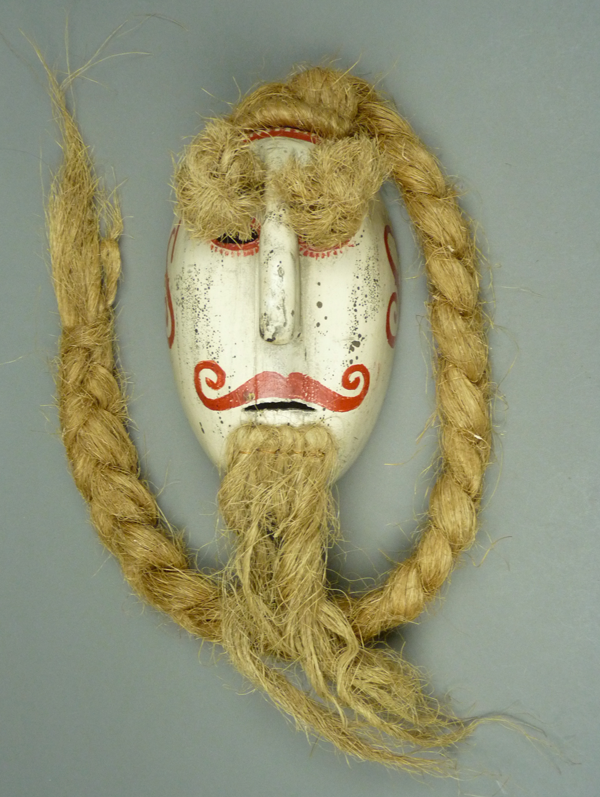

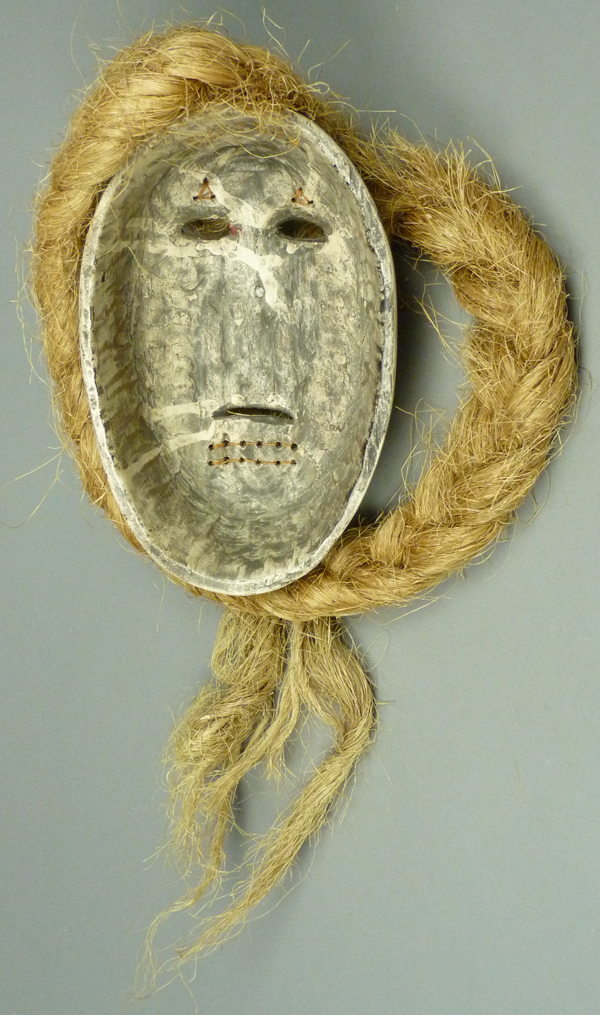
Great collection of Juan Negro masks and superb videos–best I’ve seen so far. I still don’t get the connection between Todos Santos and the Juan Negro Dances except the timing–I always thought of Juan Negro dance as equally a morality play?
Thanks again for your blog. It’s a delight